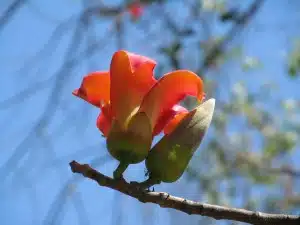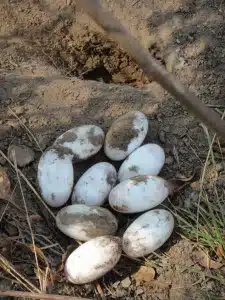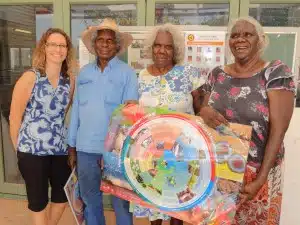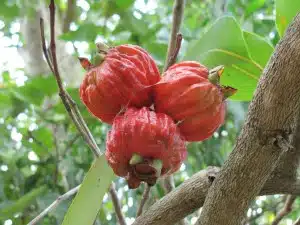A new land management tool using Aboriginal knowledge
Ngan’gi speakers know it’s time to look for freshwater crocodile eggs when the red kapok trees near the Northern Territory’s Daly River burst into flower.
This can occur at a different time each year, but the environmental link is solid.
A Darwin-based scientist has converted this link and other intimate Aboriginal knowledge of Australia’s landscape into an environmental management tool.
CSIRO’s Emma Woodward worked with Aboriginal elders as part of the Tropical Rivers and Coastal Knowledge research program to develop six seasonal calendars from six different language groups from the Northern Territory and Western Australia.
Emma will present her work in Melbourne on Monday, at a Centre for Australian Weather and Climate Research conference.
The calendars provide early warning signs of environmental change, which will help scientists manage water use and monitor the impacts of climate change.
“Changes or disturbances to patterns of expected behaviour and connections between plants and animals are noticed and queried immediately, potentially alerting us to more serious higher-level problems,” Emma said.
Each calendar depicts between four and 13 seasons in an annual cycle of climatic and ecological understanding. Focusing on river systems, they follow the activities of plants and animals which are driven by the monsoon in northern Australia.
Emma says her work taps into a previously underutilised resource.
“Aboriginal knowledge is different and adds to western science. It can make a unique and important contribution to the problems of managing the Australian environment,” she says.
“Aboriginal people have a deep understanding of the connections between everything in the environment. Their observations have revealed relationships and links between plants, animals, water and climate that we weren’t aware of before.”
With increasing pressure on northern Australia’s water resources, Emma says, it is crucial to draw on the best information available when making decisions about water management.
“Aboriginal people are key water users and bring valuable knowledge about these important resources, including detailed information about fish behaviour and habitats within the rivers,” she says.
“Indigenous ecological knowledge is being used in other countries for environmental monitoring and management but it is still very early days in Australia. The calendars are the first step in facilitating this process.”
Emma has captured Indigenous ecological knowledge from the Ngan’gi, Malakmalak, Gooniyandi, Walmajarri, Wagiman and Larrakia Aboriginal language groups across Western Australia and the Northern Territory.
Schools and universities have shown interest in the calendars as an educational resource. The Larrakia calendar, from the Darwin region, for instance, is being converted into an interactive online educational version.
Emma’s work is part of a Tropical Rivers and Coastal Knowledge (TRaCK) research program. There is more information on TRaCK online here: http://www.track.org.au/
Links to four of the six seasonal calendars:
Ngangi: http://www.csiro.au/resources/Ngangi-Seasonal-Calendar
Gooniyandi: http://www.csiro.au/resources/Gooniyandi-Seasons-Calendar
Wagiman: http://www.csiro.au/resources/Wagiman-Seasons-Calendar
Malakmalak: http://www.csiro.au/resources/MalakMalak-Plant-Knowledge-Seasons-Calendar
There is more information on Emma online here: http://www.csiro.au/en/Organisation-Structure/Divisions/Ecosystem-Sciences/EmmaWoodward.aspx
http://onlinelibrary.wiley.com/doi/10.1111/j.1442-8903.2011.00634.x/abstract
- For interviews, contact Emma Woodward at Emma.Woodward@csiro.au
- Niall Byrne, 0417 131 977 or niall@scienceinpublic.com.au or Georgina Howden-Chitty, 0419 391 057 or georgina@scienceinpublic.com.au

















 Fresh Science is on hold for 2022. We will be back in 2023.
Fresh Science is on hold for 2022. We will be back in 2023.